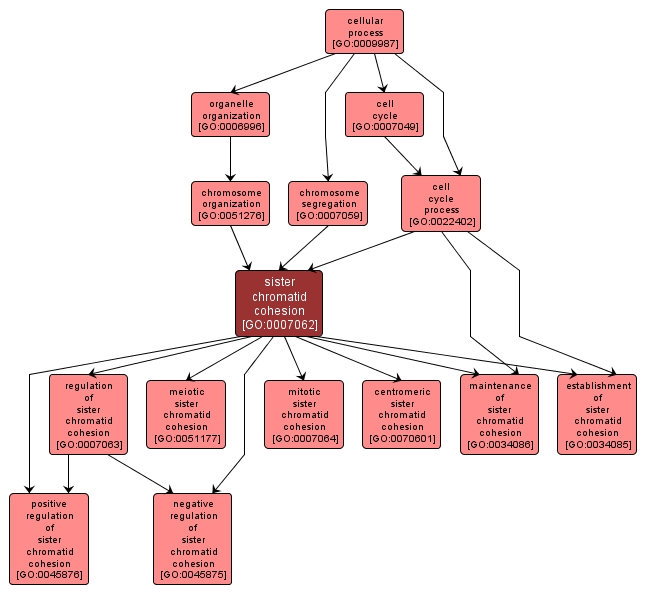GO TERM SUMMARY
|
| Name: |
sister chromatid cohesion |
| Acc: |
GO:0007062 |
| Aspect: |
Biological Process |
| Desc: |
The cell cycle process by which the sister chromatids of a replicated chromosome are joined along the entire length of the chromosome. |
|

|
INTERACTIVE GO GRAPH
|














